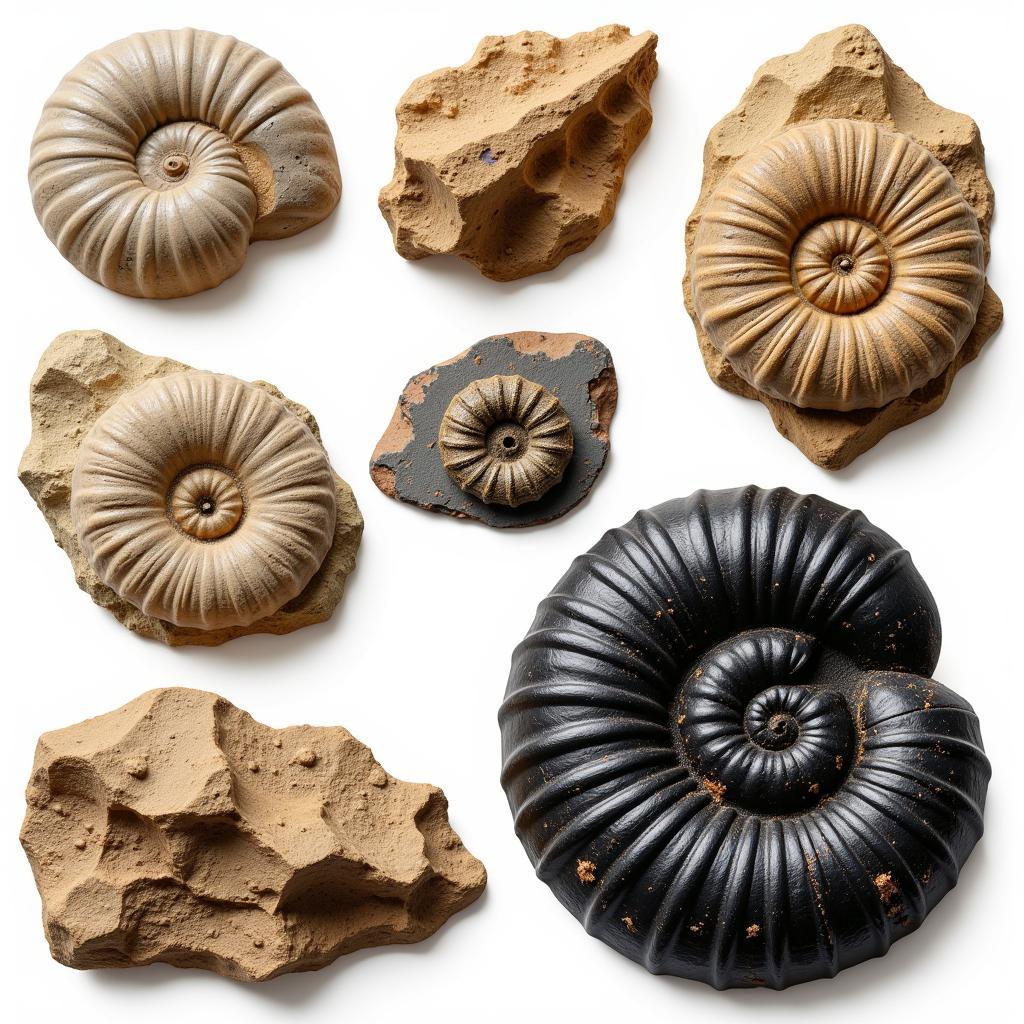Fossil, a captivating remnant of prehistoric life, often evokes images of earthy tones and muted hues. But what color is fossil, really? The answer isn’t as simple as pointing to a single shade on a color wheel. It’s a journey into the fascinating world of mineralization, geological processes, and the preservation of ancient organisms. Just after this introduction, you can find more information about the colors that start with the letter “a” at what colors start with a.
Unraveling the Hues of Fossils: A Spectrum of Earthly Tones
Fossils, essentially mineral replacements of organic material, borrow their colors from the surrounding minerals and sediments. This results in a captivating range of colors, from the common beiges, browns, and grays to the more unexpected blacks, reds, and even blues. The specific mineral composition of the surrounding environment plays a crucial role in determining the final color of the fossil. Iron oxides, for example, can stain fossils a rich reddish-brown, while manganese can impart a darker, almost black hue.
Common Fossil Colors: From Beige to Black
The most commonly encountered fossil colors are variations of beige, brown, and gray. These hues are often associated with fossils preserved in sedimentary rocks like sandstone and shale. The subtle differences in shades depend on the specific minerals present and the degree of weathering the fossil has undergone. Black fossils are often formed when organic material is replaced by carbon or other dark minerals.
 Fossil Colors: Beige, Brown, and Black
Fossil Colors: Beige, Brown, and Black
The Unexpected Palette: Red, Blue, and Beyond
While less common, fossils can also exhibit more vibrant hues. Red fossils, as mentioned earlier, often result from iron oxide staining. Blue and green fossils, on the other hand, can be formed when minerals like vivianite or turquoise replace organic material. These vibrant colors offer a unique glimpse into the chemical environment in which the fossil was preserved. You may also be interested in finding out what color coal is, which can be found at what color is coal.
Factors Influencing Fossil Color: A Geological Story
The color of a fossil isn’t solely determined by the replacing minerals. Other factors also play a role, including:
- The type of organism: Different organisms have different compositions, which can influence the fossilization process and the resulting color.
- The surrounding environment: The pH, temperature, and chemical composition of the surrounding environment can all affect the color of a fossil.
- Time and weathering: Over millions of years, exposure to the elements can alter the color of a fossil through weathering and oxidation.
What Influences the Color of Fossils?
The environment plays a large role in the fossilization process. Just like how the environment in Colorado can affect the efficacy of heat pumps, as discussed in do heat pumps work in colorado, similarly, the environment where the fossil formed dictates its color.
How do minerals affect fossil color?
Minerals are the primary colorants of fossils. Depending on which minerals are present during the fossilization process, a fossil can become anything from a pale yellow to a deep blue.
Can fossils change color over time?
Yes, weathering and exposure to the elements can certainly alter the color of a fossil over millions of years.
Expert Insights on Fossil Colors
“The diversity of fossil colors is a testament to the complex interplay between geology, chemistry, and biology,” says Dr. Amelia Stone, a renowned paleontologist. “Each fossil tells a unique story, not just about the organism itself, but also about the environment in which it lived and died.”
“Understanding the factors that influence fossil color can provide invaluable insights into past environments and ecosystems,” adds Dr. David Rivers, a geochemist specializing in fossil preservation. “By analyzing the mineral composition of fossils, we can reconstruct ancient climates and understand how life has adapted to changing conditions.” For information about the Colorado PTC rebate, visit how much is the colorado ptc rebate. You can also find further information regarding colors beginning with “a” at what is a color that starts with the letter a.
Conclusion: A Colorful Journey Through Time
So, what color is fossil? It’s a question with a multifaceted answer, a spectrum of hues reflecting the intricate processes of fossilization and the Earth’s geological history. From the common browns and grays to the more unusual reds and blues, each fossil holds a unique story written in its color.
FAQ
-
What is the most common fossil color? Beige, brown, and gray are the most common fossil colors.
-
Why are some fossils black? Black fossils are often formed when organic material is replaced by carbon.
-
Can fossils be blue? Yes, minerals like vivianite can create blue fossils.
-
What causes red fossils? Iron oxide staining often results in red fossils.
-
How does the environment affect fossil color? The surrounding minerals and sediments influence the color of a fossil.
Need Help with Your Color Choices?
For expert advice on color selection and application, contact us at:
Phone: 0373298888
Email: [email protected]
Address: 86 Cầu Giấy, Hà Nội
Our team is available 24/7 to assist you.
